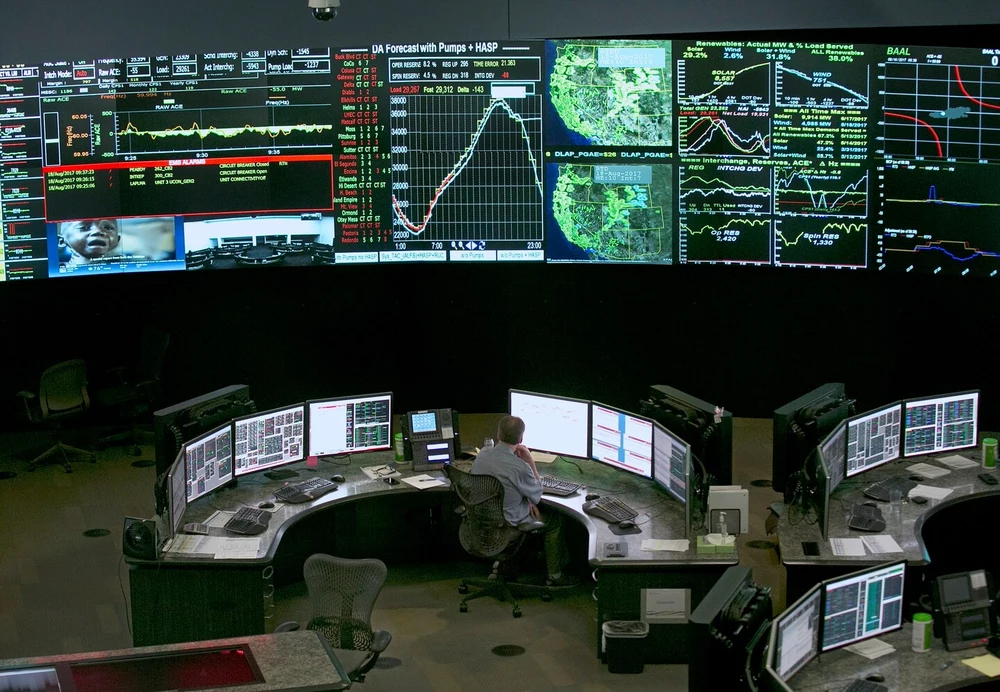Case study
How PG&E Addresses Hazard Awareness Delay with Gridware AGR Integration with OMS

Pacific Gas and Electric Company (PG&E), serving 16 million customers across Northern and Central California, successfully integrated the Gridware Active Grid Response (AGR) platform directly into its outage management systems (OMS) through advanced API connectivity. The integration directly reduces the Hazard Awareness Delay—the time gap between when grid hazards occur and when operators become aware of them.
Hazard Awareness Delay Threatens Power Grid Safety
Utilities face a critical industry-wide challenge: traditional grid monitoring systems experience delays between when hazards occur and when operators become aware of them. During this critical window, hazards can escalate rapidly, increasing risks to both the grid and public safety.
Traditional monitoring systems focus narrowly on electrical parameters within the grid itself, often failing to monitor the physical environment where many hazards originate. Grid threats often begin with environmental changes—a tree branch falling on a power line or wind damaging a pole during a storm—yet current systems lack the capability to detect these physical hazards as they develop.
Unlike systems that only detect electrical anomalies, AGR provides greater grid awareness. It empowers operators to monitor physical, electrical, and environmental factors, understand these signals at the edge and network level; and act on them to improve safety and reduce outages.
Seamless Gridware API Integration with OMS
To minimize time to resolution, PG&E leveraged API architecture from Gridware to feed real-time multi-sensor data directly into its OMS. The process began with collaborative development between PG&E's internal IT teams and Gridware engineers. Working together, the joint team successfully integrated the Gridware data into PG&E's Grid Data Analytics & Technology Tool (GDAT), which is part of the OMS. This integration now enables PG&E to process multi-sensor data from thousands of devices through one unified interface.
The direct integration with the existing PG&E OMS enables one of the country’s largest power utilities to maintain operational continuity. This integration includes customized data formatting and alert prioritization aligned with PG&E safety protocols. Furthermore, the integration provides a scalable foundation for future planned multi-sensor installations.
Transformative Operational Improvements
The AGR platform integration between Gridware and PG&E delivers measurable improvements across multiple dimensions:
- Reduction in time-to-dispatch: Provides verified, actionable intelligence directly into existing workflows, eliminating delays from manual data entry, internal validation processes, and communication handoffs.
- Streamlined data intake: Direct API integration eliminates manual triage, interpretation, and transcription steps that may introduce time delays, errors, and inconsistencies.
- Enhanced precision and accuracy: Dispatchers receive detailed, verified data identifying the specific hazard nature and location within the OMS, enabling more targeted response strategies and efficient resource allocation.
- Scalable monitoring capacity: The system maintains comprehensive situational awareness without overwhelming operational staff during major-event days.
- Proven performance during major events: Recent storm events and fire weather conditions validated the system's strategic value, with continuous monitoring and real-time alerts enabling proactive response measures that prevented minor issues from escalating.
"With the ability to take near real-time information received from the Gridware multi-sensors and then move it into our OMS, we accelerate our decision-making to resolve issues faster and more strategically," said Tim Bedford, Principal Program Manager, Asset Performance Center, PG&E. "Active Grid Response is game changing for us, and I believe the industry."
The successful integration demonstrates that advanced grid response technologies and data can be seamlessly incorporated into existing operational frameworks without disrupting established workflows or requiring extensive staff retraining.
Ready to Scale
PG&E's successful API integration represents a significant advancement in AGR. By addressing hazard awareness delay through seamless OMS integration, PG&E enhances community safety while maintaining reliable energy service.
The implementation provides operational validation for large utilities, demonstrating that advanced grid monitoring technologies can be successfully integrated into existing workflows. At enterprise scale, Gridware and PG&E deliver measurable improvements in safety, reliability, and operational efficiency. This partnership further exemplifies the innovative thinking and collaborative approach necessary to more effectively meet evolving grid monitoring challenges.

